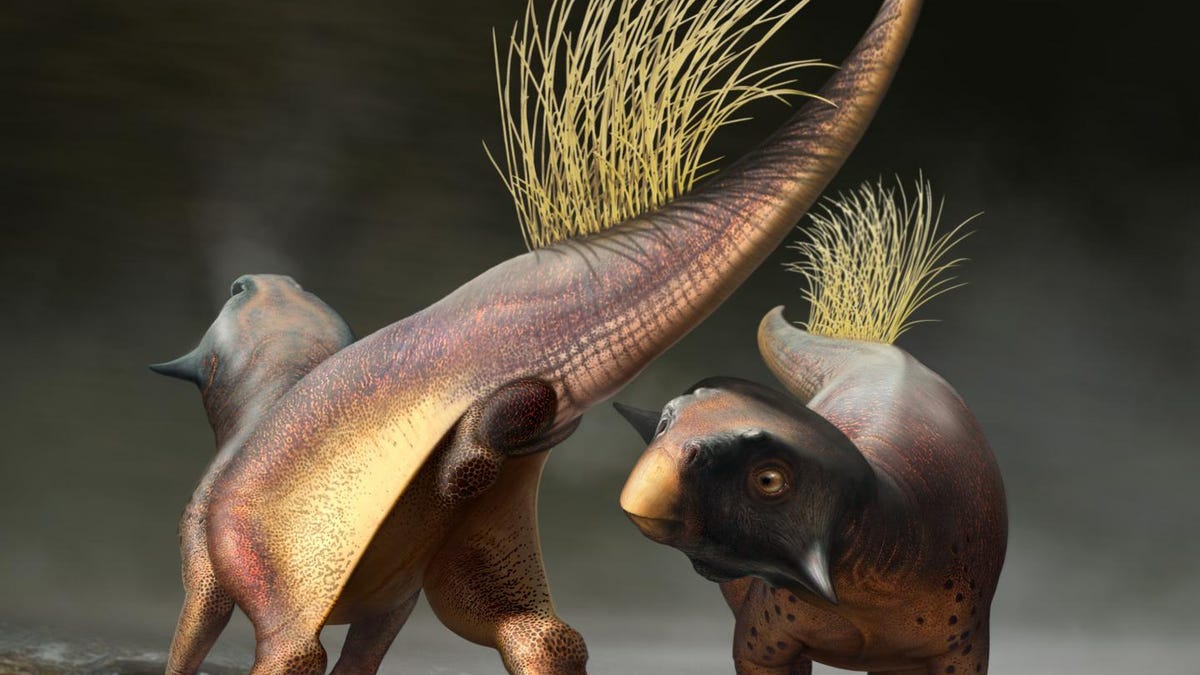Paleontologists finally have their first good look at a dinosaur's butt
For the first time ever, scientists take a closer look at the dinosaur's cloaca that was used to expel waste and, potentially, attract a mate.

Here's a digital reconstruction of a Psittacosaurus dinosaur illustrating how the cloacal vent may have been used for signaling during courtship.
Paleontologists spend their entire academic careers studying the anatomy of dinosaurs. Now a team of scientists from the University of Bristol has finally described in detail a dinosaur's cloacal or vent, which is used for everything from defecation and urination to attracting a mate to breed with (or, less scientifically, a jack-of-all-trades butthole).
In a new study, published in the journal Current Biology on Tuesday, Scientists revealed a range of theories about the cloacal vent on a dog-sized dinosaur called Psittacosaurus, a relative of Triceratops from the early Cretaceous era, which lived about 120 million years ago.
"I noticed the cloaca several years ago after we had reconstructed the color patterns of this dinosaur using a remarkable fossil on display at the Senckenberg Museum in Germany which clearly preserves its skin and color patterns," Dr. Jakob Vinther from the University of Bristol's School of Earth Sciences said in a statement on Tuesday.
A closer look at the preserved cloacal vent in Psittacosaurus.
"It took a long while before we got around to finish it off because no one has ever cared about comparing the exterior of cloacal openings of living animals, so it was largely unchartered territory," Vinther added.
The researchers reveal the dinosaur's cloaca has similar features as cloacas on alligators and crocodiles. The dino's outer cloaca areas were also likely highly pigmented. This pigmentation may have been used to attract a mate, much like baboons use theirs.
"We found the vent does look different in many different groups of tetrapods, but in most cases, it doesn't tell you much about an animal's sex." Dr. Diane Kelly from the University of Massachusetts Amherst said. "Those distinguishing features are tucked inside the cloaca, and unfortunately, they're not preserved in this fossil."
It's not just the appearance of the dino's vent that got the attention of mates, but also its smell. The large, pigmented lobes on either side of the cloacas could have also included musky scent glands to get the attention of a mate.
A Psittacosaurus specimen from Senckenberg Museum of Natural History -- preserving skin and pigmentation patterns and the first, and only known, cloacal vent.
"Knowing that at least some dinosaurs were signaling to each other gives palaeo-artists exciting freedom to speculate on a whole variety of now plausible interactions during dinosaur courtship," palaeo-artist and study artist Robert Nicholls said in a statement.
"It is a game-changer!"

